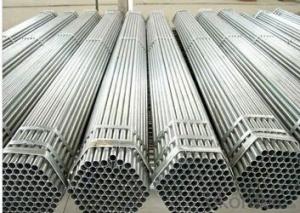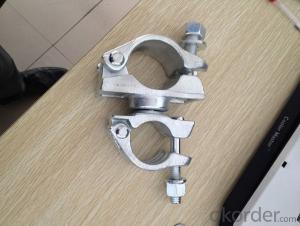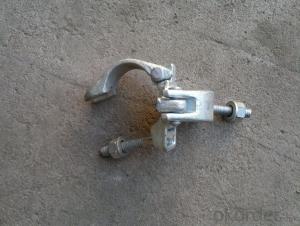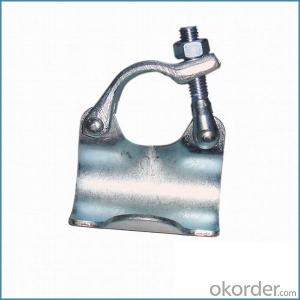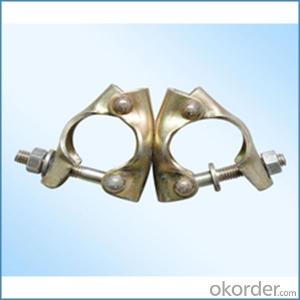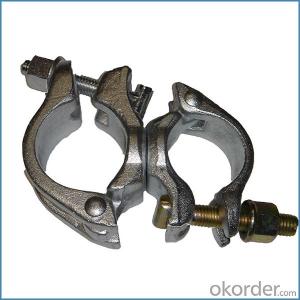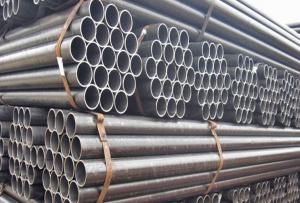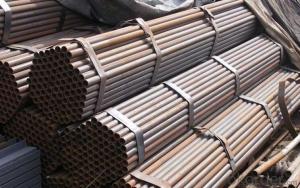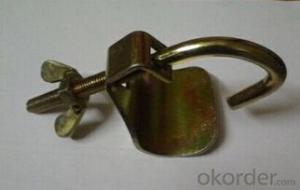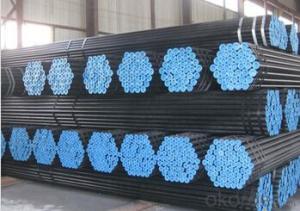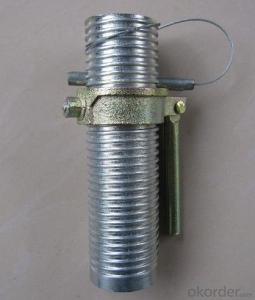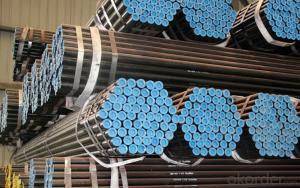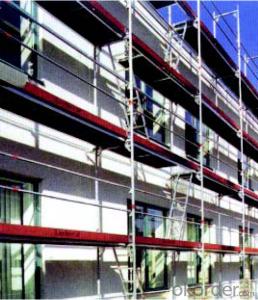Post Coupler British Type for Sale in China
- Loading Port:
- Tianjin
- Payment Terms:
- TT OR LC
- Min Order Qty:
- 1000 kg
- Supply Capability:
- 100000 kg/month
OKorder Service Pledge
OKorder Financial Service
You Might Also Like
Post Coupler British Type for Sale
Description
1.The scaffolding coupler is always used to connect the steel pipe as scaffolding system.
2.The often used coupler is swivel coupler and righ angle coupler .
3.We can provide types of scaffolding coupler according to your requirement.
4.Couoler can fix the 48.3mm scaffolding steel pipe tightly and make the whole scaffolding system more steadily.
5.Material:Q235 steel
6.Overall Size:48.3mm*48.3mm
7.Surface Finish: Galvanized/ Painted
8.Standard:BS1139,EN74
9.Package:25pcs/bag
10.Manufactuering as per customer requirements
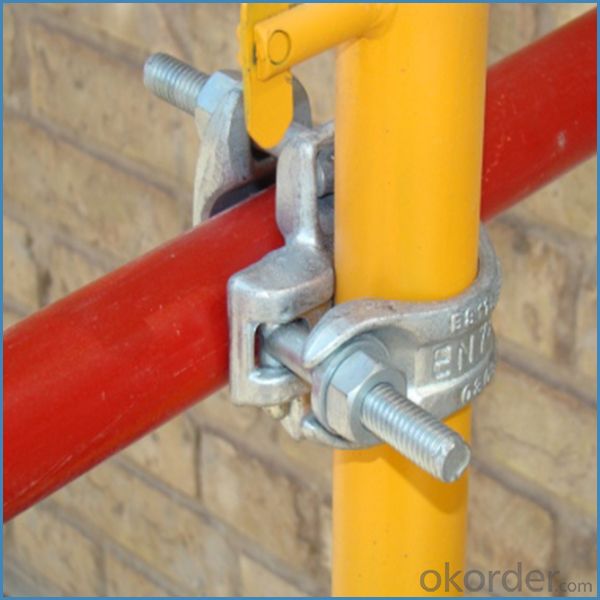
Feature
(1)Excellent Anti-Breaking—Cold Pressed Steel
(2)Outstanding Resistance Deformation
(3)Strong Anti-Dropping Ability
(4)Longtime USe
(5)Qualtity Guaranteed
(6)OEM Service
Photo
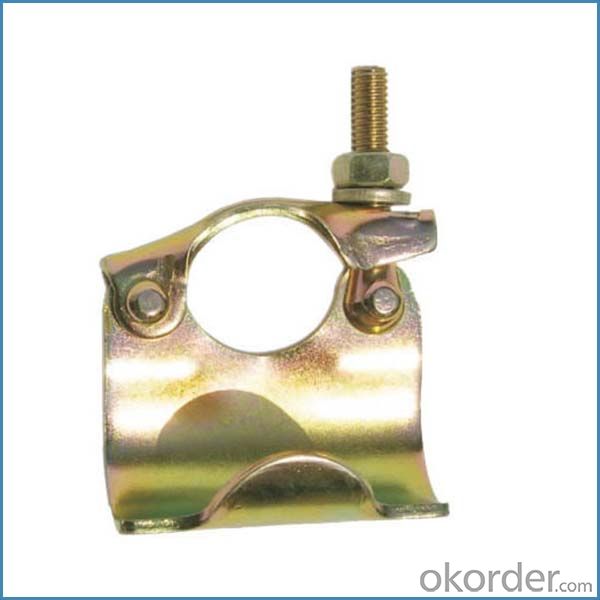
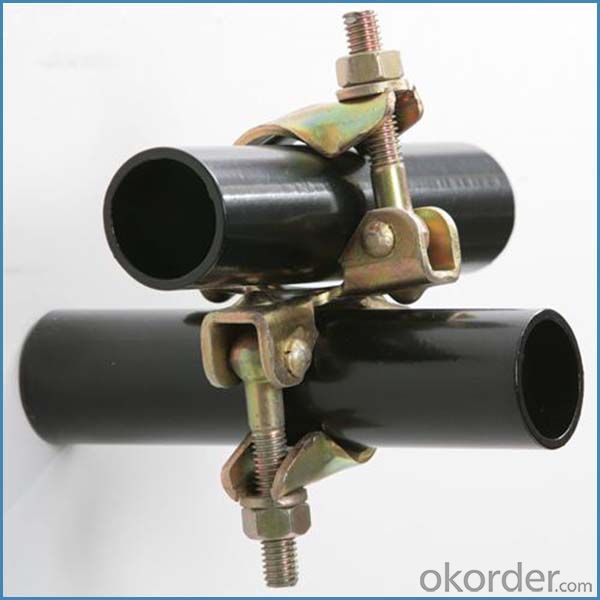
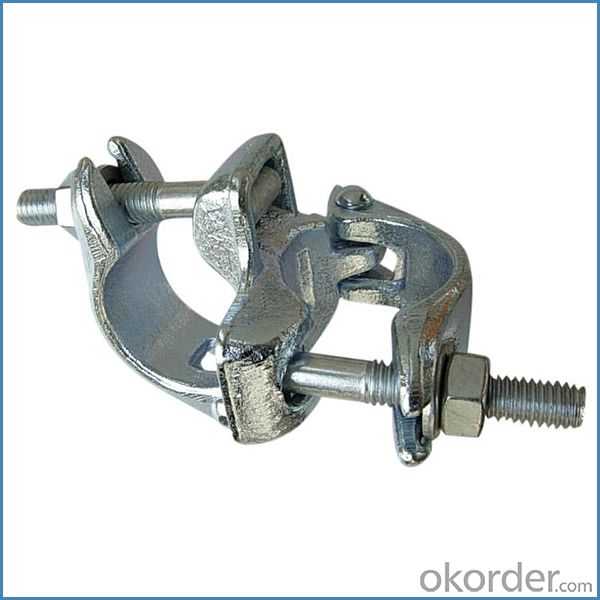
Parameter
| Material | Q235,345steel |
| Size | 48.3mm*48.3mm |
| Surface finish | Galvanized |
| Weight | 1.1kg around |
| Standard | BS1139,EN74 |
| Package | 25pcs/bag,steel pallet |
| Manufacture | As per customer requirement |
| Market | Africa, South America, the Middle East and Asia |
FAQ
Q: Are you a factory or trading company?
We are a state-owned corporation in China,dealing with various kinds of building materials.We have our holding subsidiaries.
Q: Where is your factory located? How can I visit there?
Our factory is located all around China.
Q: Can I get some samples?
Sample is free, customer only pay freight for the first time.
Q: Delivery?
10-30days. (5-15 containers)
Any question,feel free to contact us.
- Q:What is the typical price range for steel tube couplers?
- The typical price range for steel tube couplers can vary depending on factors such as the size, quality, and quantity needed. However, in general, steel tube couplers can range from around $5 to $50 per unit.
- Q:I got my scaffolding piercing done earlier this year but it got infected and just wouldn't heal. I took it out to let it heal up and now it's fine, I have no visible bumps either. Should I get it done again? or leave it because it got infected first time? I have also always had trouble with helix piercings not healing properly.Any advice?
- Don't get it again if it got infected the first time and specially if your helix piercing has problems as well...it's like asking for it to get infected again.
- Q:Are steel tube couplers suitable for scaffolding projects with restricted access areas?
- Yes, steel tube couplers are suitable for scaffolding projects with restricted access areas. Steel tube couplers are commonly used in scaffolding systems due to their versatility, strength, and reliability. They are designed to connect steel tubes together, forming a secure and stable structure. In restricted access areas, where space is limited and maneuverability is a challenge, steel tube couplers provide the perfect solution. They are compact and can be easily installed in tight spaces, allowing for efficient scaffolding construction. Additionally, steel tube couplers are adjustable and can be positioned at various angles, enabling scaffolding to be built around obstacles or in irregular areas. Furthermore, steel tube couplers offer excellent load-bearing capabilities, ensuring the safety and stability of the scaffolding structure. They are capable of withstanding heavy loads and providing a secure platform for workers and equipment, even in restricted access areas. Overall, steel tube couplers are a suitable choice for scaffolding projects with restricted access areas. Their versatility, strength, and ability to be installed in tight spaces make them an ideal solution for constructing safe and stable scaffolding systems in challenging environments.
- Q:Are steel tube couplers compatible with different types of scaffold tubes?
- Yes, steel tube couplers are compatible with different types of scaffold tubes. They are designed to connect and secure various types of scaffold tubes together, providing a strong and stable structure.
- Q:Are steel tube couplers reusable in scaffolding?
- Yes, steel tube couplers are reusable in scaffolding.
- Q:getting it done this weekend, ha JUST WONDERING, not that i mind the pain ;) , if it hurts much :)?and would numbing cream have an affect if i used it?!
- don't bother using it, it's not that bad, trust me!
- Q:What is the typical lifespan of steel tube couplers in scaffolding applications?
- The typical lifespan of steel tube couplers in scaffolding applications can vary depending on several factors. The quality of the couplers, the frequency and intensity of use, and the maintenance and care provided can all affect their lifespan. Generally, high-quality steel tube couplers can last for several years when used in standard scaffolding applications. With regular inspections, maintenance, and proper care, they can withstand the rigors of construction sites and provide reliable support for extended periods. However, it is important to note that certain factors can reduce the lifespan of steel tube couplers. Exposure to harsh environmental conditions, such as extreme temperatures, moisture, and corrosive substances, can accelerate the deterioration process. Additionally, if the couplers are subjected to excessive loads or misuse, their lifespan may be significantly shortened. To ensure the longevity of steel tube couplers, it is crucial to follow manufacturer guidelines regarding their usage, storage, and maintenance. Regular inspections should be conducted to identify any signs of wear, damage, or corrosion. If any issues are detected, immediate repairs or replacements should be made to maintain the safety and integrity of the scaffolding system. Ultimately, while there is no fixed lifespan for steel tube couplers in scaffolding applications, their durability and longevity can be maximized through proper care, maintenance, and adherence to safety guidelines.
- Q:Ok well I have been planning on getting a scaffold/industrial and I was reading some questions that others asked and alot of people said a 13 year old wouldn't be able to get one because they are to young, even with a parents consent! Is this true?
- your bod is still growing until 21-25 yrs and why ruin perfection like you all the best
- Q:Can steel tube couplers be used in scaffolding projects with different building materials?
- Yes, steel tube couplers can be used in scaffolding projects with different building materials. Steel tube couplers are versatile and can be used to connect steel tubes together, regardless of the building material being used. Whether the scaffolding is being constructed with steel, wood, or other materials, steel tube couplers can provide a secure and reliable connection. These couplers are designed to withstand heavy loads and provide stability to the scaffolding structure, making them suitable for use in various construction projects with different building materials.
- Q:What is the maximum load capacity of steel tube couplers in scaffolding?
- The specific type and size of steel tube couplers in scaffolding determine their maximum load capacity, which can vary. However, typically, most steel tube couplers used in scaffolding can bear loads between 2,000 to 4,000 pounds (907 to 1,814 kilograms) per coupler. It is crucial to consider that the load capacity may also be affected by factors like the coupler's quality, the condition of the scaffolding structure, and the proper installation and usage of the couplers. Hence, it is always advisable to refer to the manufacturer's specifications or seek professional advice to ensure that safe load capacities are not exceeded.
1. Manufacturer Overview |
|
|---|---|
| Location | |
| Year Established | |
| Annual Output Value | |
| Main Markets | |
| Company Certifications | |
2. Manufacturer Certificates |
|
|---|---|
| a) Certification Name | |
| Range | |
| Reference | |
| Validity Period | |
3. Manufacturer Capability |
|
|---|---|
| a)Trade Capacity | |
| Nearest Port | |
| Export Percentage | |
| No.of Employees in Trade Department | |
| Language Spoken: | |
| b)Factory Information | |
| Factory Size: | |
| No. of Production Lines | |
| Contract Manufacturing | |
| Product Price Range | |
Send your message to us
Post Coupler British Type for Sale in China
- Loading Port:
- Tianjin
- Payment Terms:
- TT OR LC
- Min Order Qty:
- 1000 kg
- Supply Capability:
- 100000 kg/month
OKorder Service Pledge
OKorder Financial Service
Similar products
New products
Hot products
Related keywords





